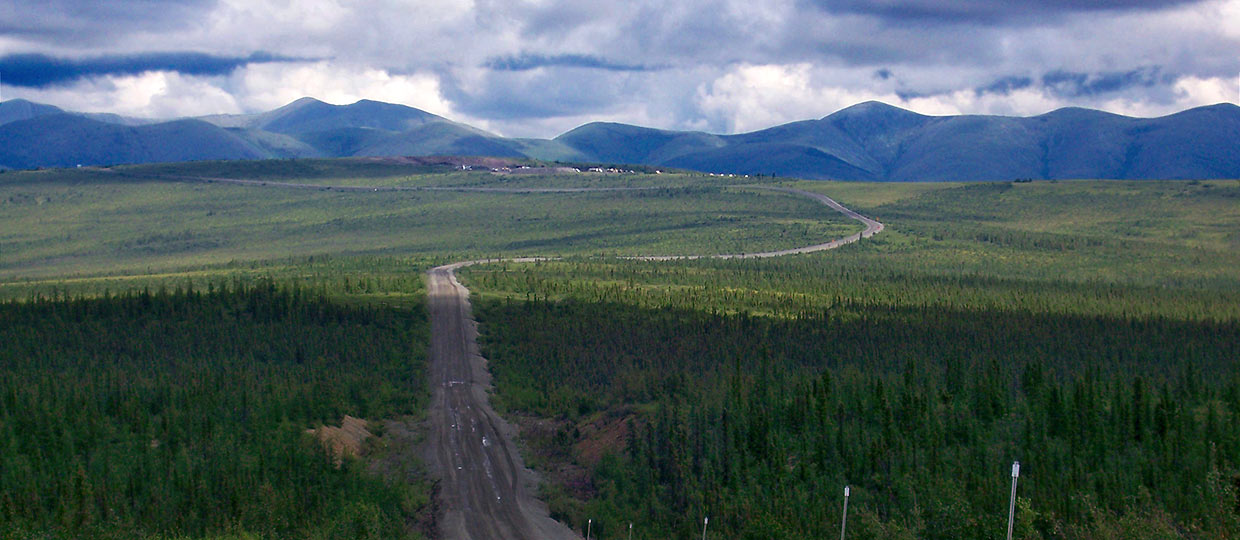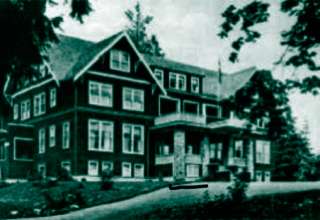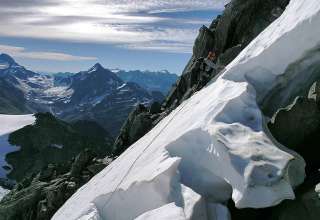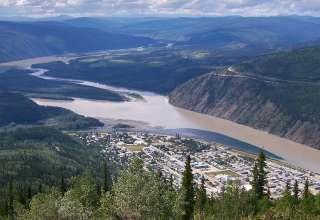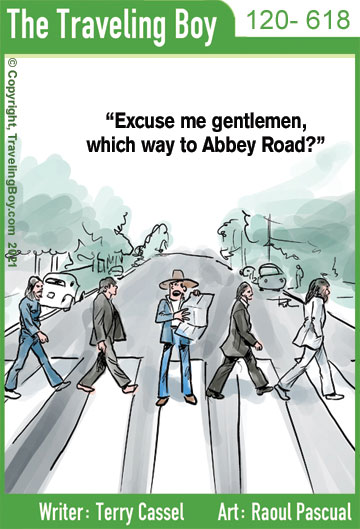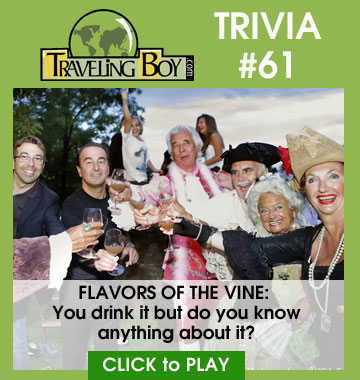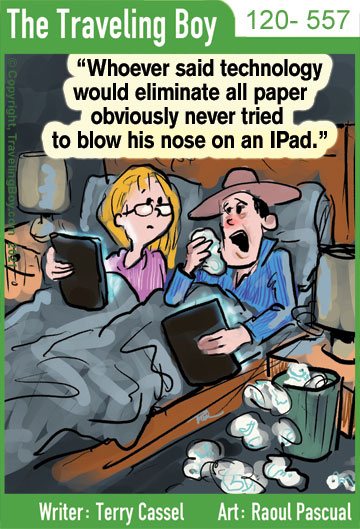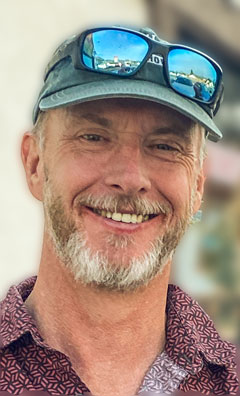I awoke the next morning, Wednesday, August 2nd, to find the campground socked in with fog. No matter, I thought, as I had quite a day planned. I headed out to the office that would arrange to take me about 130 kilometers further north, to the native fishing village of Tuktoyaktuk, or “Tuk,” situated right on the shores of the Arctic Ocean. I arrived at 8:30 and was told that the weather was worse in Tuk, and no planes were flying out. The Inuit woman told me to check back in an hour. I walked next door to the Arctic Regional Visitors Center, where a 17 year-old Inuit girl greeted me. Jodie was a very sweet girl who liked to talk a lot about life in Inuvik, and I loved hearing about it. She had a deep, nasal voice, such as someone who suffers from severe allergies and asthma, with a wickedly deviated septum to boot. And, she was a gassy, gassy girl. At one point she told me that she wasn’t feeling so well and was having some stomach problems. No kidding. But, despite her colon’s occasional interruptions, I enjoyed her talk of life during their nine-month winters. She told me about her Skidoo (a snowmobile), beaming like a proud parent (every home in Inuvik has at least three Skidoos parked out front). She urged me to attend the Gwich’in Feast, to be held later that day at the Family Center. She made a cup of coffee for me, and went on and on about life in the Far North, as she casually hand-beaded a case for her cell phone, and farted.
At 9:30 I checked in next door about my flight, but the weather had only worsened. The woman, distracted by her three small children who ran amok around the office, said I should try back again in another hour. So I returned once again to the visitor center, where I asked Jodie to give me a tour of the interpretive displays. She told me that her great-great grandfather was, in fact, one of the members of the Lost Party. The same Lost Party that was found in an unfortunately frozen state by Sergeant Jack Dempster himself. She went on to tell of how her family just got back from a whale hunt, with a successful catch of a Beluga. The native people of the region rely heavily upon the land, and whale meat is no exception. Her father, her brothers, her sister – they all had boats and they all hunted. The whale blubber is boiled in great vats to create what’s known as Muktuk. She promised to bring me some to sample the next day – if it was ready.
I checked back an hour later on my flight, with no good news. No one was flying in this weather. I would have to try again tomorrow. I was a bit disappointed, but I also reminded myself that things have a way of coming together just as they should, whether we can see it at first or not.
I wandered the town for a while, peeking into this building and that, filming the odd corners of this unique town. I soon found myself at the Happy Valley Campground, situated on the banks of the river just outside downtown. I chatted with the attendant, seeing if she knew of a place where I could rent a canoe or other boat, or if she knew how I could get to Tuk. She happily began making calls on my behalf, but it quickly became apparent that things happen according to no plan or schedule up in this part of the world. Phone numbers were no longer in service. Town maps were inaccurate. People came and went. Despite their enthusiastic willingness to help, people simply didn’t know what or when or where or who or how. I thanked her for her efforts, and was in my car about to move on, when she came running out, arms waving above her head.
“I think these people want to talk to you, ay?”
These people were Peter and Irene Bowal. They and their five children were camping at the park, and had overheard my attempts to get to Tuk. They too were looking for a plane to take all seven of them. We decided that, with my inclusion, we should be able to charter someone to get us there. Peter, a law professor at the University of Calgary, wearing a large floppy hat and a mosquito-netting jacket, was immediately on the pay phone trying to work it out. Warm and soft-spoken, he was talking with Roger up in Tuk, reviewing our options, while I chatted with Irene. Things went back and forth for a while until it looked as if we may all be able to get on a plane at 6:00 that evening, but would need to stay in Tuk at least overnight, and maybe until Friday morning. This was acceptable by all of us, but the weather was still a factor. Roger, the voice on the other end of the phone, was going to work on it, and also try to find someone with a boat. Meanwhile, Peter and I agreed to meet in an hour to ring Roger back for a status update. I ran into town for lunch, and enjoyed a musk-ox burger for lunch with a side of poutine, and was back at the payphone an hour later. Peter and I both spoke with Roger, who had a deep, warm, and wise voice, but things weren’t looking good. Only a few planes were flying, and those few seats were filled with locals. I would have to try tomorrow. I thanked Peter for his time and effort, we exchanged business cards, and we wished each other luck on our adventures.
I continued exploring the town, including a stop in the community greenhouse where I met a woman from Finland. She would spend a few months every year in Inuvik, doing research on a proposed gas pipeline through the region. While in town, she kept a small plot at the greenhouse, growing carrots and tomatoes and the like. We chatted for a while, before I wandered back across town and stepped into the Igloo Church. I showed up just in time for a short docent-led tour, and, as I entered the chapel, I found myself face-to-face with my brand-new Canadian friends, the Bowals, who enthusiastically greeted me as if we were all old chums. They and their brood were there for the tour, which we all enjoyed together as the docent informed us of it’s interesting history. After the tour I went on to stroll through the enormous family center, which housed many meeting rooms, game rooms, and an Ice Hockey rink, as I attempted to find the Gwich’in feast. Again, no one I met knew exactly where or when it was happening. I continued on like this for some time, wandering the town, talking with the locals, talking with the few tourists, and just exploring the area. I came across a small grassy area near the river, strewn with a few picnic tables and scavenging Ravens. Sitting atop one of the picnic tables at an odd angle was a wooden chair. I took the chair down to the shores of the river and found a spot to sit. Two dogs briefly joined me, splashing around in the water. Their owner and her friend stopped to chat a while as they passed by my way.
I sat for a few hours, contemplating all that one contemplates when sitting alone in nature by a river. I imagined this land in the winter, covered completely by a blanket of pure white. The McKenzie River, when frozen solid in late December, becomes an ice road upon which one can drive all the way to Tuk. I imagined the Northern Lights dancing their multi-colored way across the ever-darkened sky. I considered coming back here in the winter to witness all of this first hand. I also considered my options for getting to Tuk, realizing that I may not get there the next day either. John Steinbeck said, “A journey is like marriage. The certain way to be wrong is to think you control it.” I decided as I sat there on that shore, that if I couldn’t get to the Arctic Ocean the next day, then I would have to delay my return trip home until I could get there. I simply couldn’t come this far and not make it the last few miles to the Ocean.
As the day drew to a close, I ended up at the Peppermill restaurant in the Finto Lodge, where I sampled some local Arctic Char. I reflected on how sometimes staying away from the popular vacation spots and tourist traps, and simply finding a unique place in the world and getting to know the locals is where one can really find the true value of travel. Today was truly an example of that.
It was a great way to spend my 37th birthday.
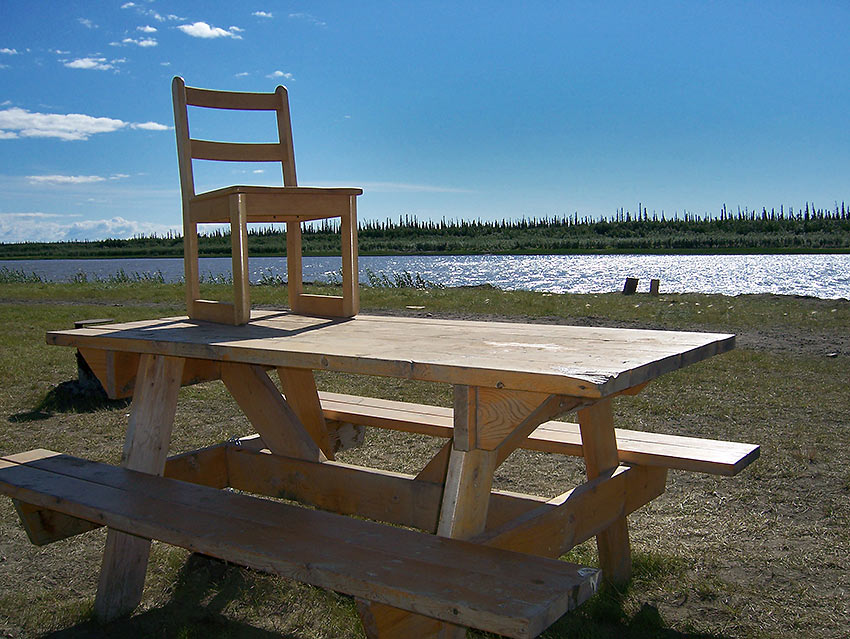
Tuktoyaktuk
Despite another foggy morning, the next afternoon I found myself in the one-room airport in Inuvik, waiting to board the single-prop, six-passenger Cessna 205. Our pilot, Simon, who couldn’t have been more than 20 years old, came out of the back room and collected us for the 40-minute flight. I boarded along with a few fellow travelers, including Andrew and his Belgium-born wife Marie-Anche, who reside in Victoria, British Columbia, as well as Jean-Pierre and his wife, visiting from France. We taxied down the dirt runway and we were off, finally, towards the Arctic Ocean. We climbed to 2500 feet, and from this vantage point the true scope of the terrain became apparent. No trees, no mountains, no sign of humankind for as far as the eye could see, which was quite far in this flat landscape. Nothing but tundra and what must have been ten thousand lakes of every shape and size in all directions. As we flew further Northwest, following the delta, the green patches of tundra began to shrink, while the blue glacial lakes grew bigger, until, at last, sitting on a relatively small scrap of tundra, was the native fishing village of Tuktoyaktuk, with the Arctic Ocean spreading out beyond it to the horizon. We landed on the precarious gravel runway – I had finally made it.
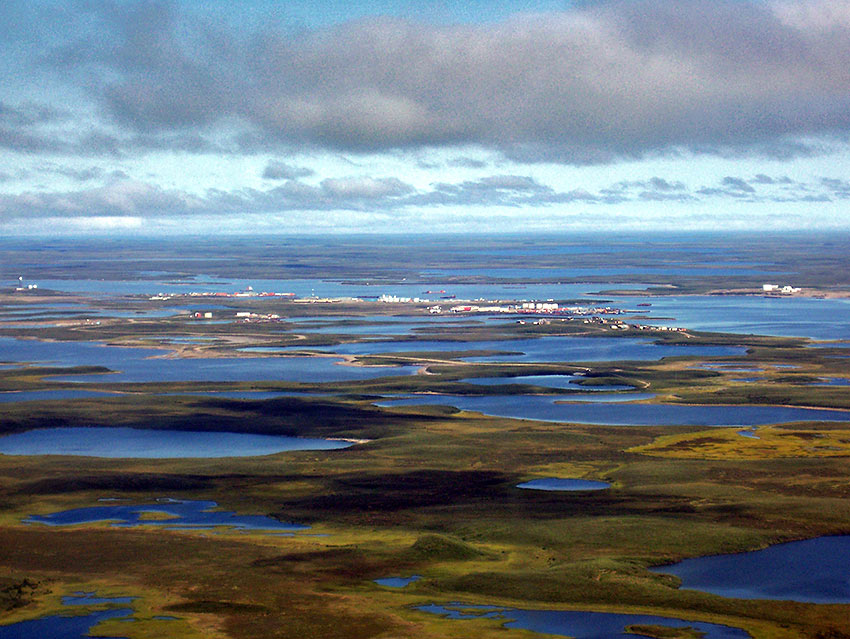
Once inside the small, pre-fab building that served as the airport, Roger, the voice on the phone from the previous day, greeted me. He was a large native man, who perfectly matched his deep, dulcet voice.
“Welcome to Tuktoyaktuk, Adam.”
How he knew it was me stepping off of that plane I was never quite sure. I was also warmly greeted by, yet again, Peter Bowal and his wife Irene and their pack of five, who made it in on a flight just before me. They would be staying until Saturday, borrowing Roger’s truck to get around, and his trailer to sleep. Roger escorted us by van to various sites in his town, and discussed life this far north. This was a true fishing village, with tumbledown wooden smokehouses lining the small harbor. 500 Inuit and Gwich’in call this place home, year round, and while the modern world has managed to make its way all the way up here, they still live very much a traditional life.
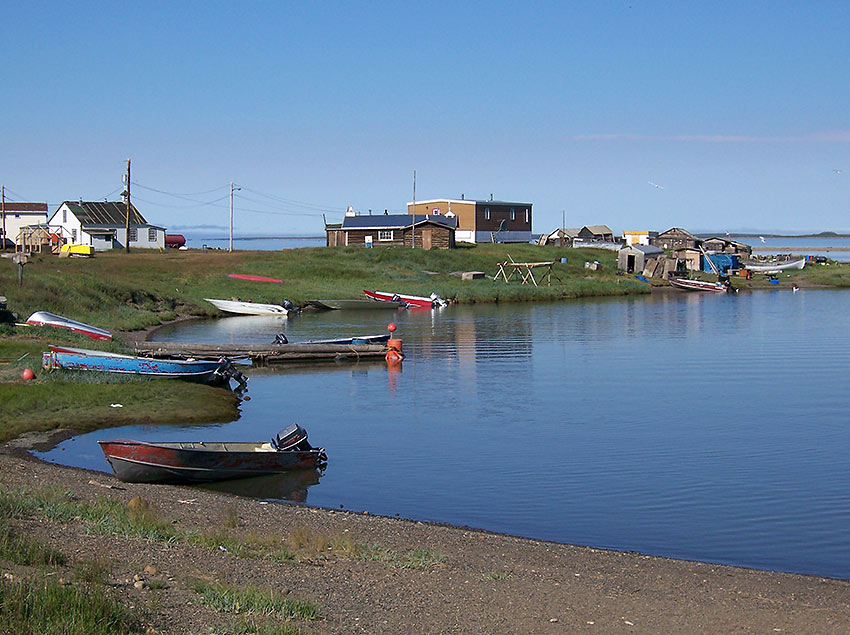
The highlight of the trip was making it to the shores of the Beaufort Sea on the Arctic Ocean. Despite the warning of cold, 40-degree water, it seemed much warmer as we walked across painful rocks and entered the sea. I stood there for a long time, water lapping at my legs, bending my mind around where I was and what I was doing. Not the usual Thursday. Later, while inside the village’s small church, I asked Roger how his people could manage to walk great distances over the spongy tundra in pursuit of elk or caribou. He placed his large hand on my shoulder and leaned in close, as if he was about to whisper some magical ancient Native American wisdom. He looked me dead in the eye and simply said, “Very carefully.”
A few hours later we were back on the plane. This time I sat in the front, in the co-pilot’s seat. Simon the Pilot told us that we would fly out over the Ocean, then pick up the river and follow it all the way back to Inuvik. We sped down the landing strip and were off over the Arctic waters. A few minutes into the flight, Simon leaned over to me and asked, “You wanna fly the plane, ay?” Without hesitation I grabbed the yoke. I must admit that my father is a private pilot, and I have some experience flying small planes. However, our pre-pubescent pilot was not privy to this information when he asked me to take control. I thought maybe it was his nappy-time and he had to go sleepy-bye. Whatever his reasons for deputizing me a bush pilot, he pointed off in the distance and said, “Head for that lake.” With a thousand lakes in all directions I had no idea to which one he was pointing.
“Which lake?” I asked.
“That one, ay.”
Still, no clue. I banked the plane in the general direction in which he was pointing until at last I saw the river. He told me to follow the river all the way back, which I did. So there I was, flying this Cessna 205, at 150 mph, 1500 feet over the wild Arctic Tundra. Was this really happening? I wondered if the four passengers in the back could see that their fate was now in my hands. I flew from Tuk all the way back to Inuvik. I swear this child-pilot would have let me land the bird if I hadn’t insisted on handing the controls back over to him so I could get some footage of Inuvik from the sky. We touched down safely, if not a bit roughly, at the Inuvik airport (my co-pilot admitted it may have been a smoother landing if I had stayed with the controls). I headed back to the Finto Lodge for my last dinner in town.
Just as I sat at my table in this small restaurant that doubled as the hotel’s lounge, Andrew and Marie-Anche, my fellow flight passengers, walked in and I suggested we all dine together. Over dinner, I learned that they work as consultants, modeling various trends on vast areas of land in Western Canada. He had recently completed work trying to determine if the Spruce Beetle infestation of Eastern British Columbia would migrate to the west. He told me that it definitively turns out the little pests may, or may not migrate west. Okay then.
We talked about ecology and the environment and politics as we enjoyed our dinner and the local beer. I learned that Canada has allowed the native peoples of the vast territorial regions of the country to not only continue to live on the same land as their ancestors have for millennia, but to also co-govern these territories. As recently as 10 years ago, the Canadian government split the Northwest Territory in two, giving half back to the Inuvaluiat people, an area now known as Nunuvat. The indigenous people continue to live a traditional lifestyle in harmony with other Canadians of the region, as well as owning cooperative businesses such as supermarkets, banks, and airlines.
After dinner I made my way back to camp, where I stayed up as late as I could, watching the midnight sun work it’s way slowly across the sky, illuminating this hauntingly beautiful delta at the top of the world.
Back to Whitehorse
I spent the next morning at the deserted campsite, enjoying the peace and quiet and scenery, and slowly packing up my gear for the flight back to Whitehorse. I donated some items that I would no longer need to the camp attendant, trying to lighten my load. This included my red and white Canadian cooler, purchased only a week ago, some D-cell batteries, my can of Gunk tire repair, and a few bottles of Gatorade. By noon I was again at the airport and ready to board my plane for the 2½-hour trip, via a short stop in Dawson.
The airport provides no security whatsoever – no metal detectors, x-ray machines, or security guards. You can keep your mukluks on, and you don’t have to take your laptop out of your sled-bag. There is, however, a large, stuffed Polar bear in the middle of the small waiting area – an intimidating deterrent to all would-be Arctic terrorists. As we exited the terminal to board, an elderly native man stepped in front of me. The attendant asked for his boarding card, but he simply shook his hand at her and grunted. She allowed him to pass without further question, and this brazen stowaway boarded the plane directly in front me.
Although the gleaming silver 34-seat twin prop airplane looked sturdy from the outside, the inside was another story. Duct tape held together cracked walls. There were burn marks, chips and gouges, missing screws and buttons, ripped-up carpet – decor you generally DON’T like to see inside an airplane. I wondered if the maintenance of the inside of the plane in any way reflected the maintenance of the far more crucial outside of the plane. A few people didn’t bother to fasten their seatbelts, and a child played in the aisle. The plane sounded more like a Warner Bros. cartoon character than something supposed to be dependably airworthy. And, it was if Mel Blanc himself voiced the starting of the engine of this airship. It sputtered and choked and coughed and spat and wheezed and buzzed and sounded like Sylvester the Cat having a grand mal.
Once airborne it was a surprisingly smooth flight. I caught glimpses of the Dempster Highway and even a look at the Peel River ferry and Fort McPherson as we headed for Dawson. Ninety minutes later we touched down in a disturbingly narrow canyon. We all had to disembark while they refueled the plane. Ten minutes later the flight attendant announced, “If you’re going to Whitehorse, follow me.” We followed her back on the plane, picking up a few more people for the ride. This takeoff was a bit rough, as evidenced by the young girl behind me who filled not one, not two, but three barf bags. I donated mine, and my bottle of water to the cause, as her grandmother wiped beads of sweat from her green forehead. Things eventually smoothed out, and we flew through a blanket of cloud cover until we landed in Whitehorse an hour later, in the pouring rain.
Slim, Bob, and Caribou Stew
I decided to rent a car for the remainder of the wet afternoon, and after I checked into my hotel I drove around Whitehorse proper, investigating its funky little corners. I stopped at the world’s largest wooden fish ladder, and watched some Chinook Salmon dance around in the water for a bit. It finally stopped raining but it was chilly and a cold wind was blowing. I ended my day at Yukon Rib & Salmon. Soon after I was seated, Slim and Bob entered the joint. Slim, and Bob. As the place was a bit crowded and I was alone at a table for four, I offered to share the table. Slim, an older gentleman, had grown up in the Territories, and worked the McKenzie River in Yellowknife as a young man (where you can still “work” a river). Now he spends his time flying his plane with his son. His pal Bob, as it turns out, was the president of Norcon, the company from which I rented the SUV for the trip. I thanked him for the excellent customer service, and sung the praises of the vehicle that served as my home for the last week. For my final sampling of Northern cuisine I enjoyed Caribou stew with bannock bread, and another few bottles of Arctic Red.
After dinner I walked over to the 20-hour store behind my hotel and purchased a fine Cuban cigar. As I was fighting the wind to light my smoke with a match, a small Rastafarian man appeared out of the mist and produced a gold lighter. As he held the lighter in place while I lit my cigar he said, “A tourist sees what he expects to see, but a traveler sees what he sees.” I thanked him for the light and he assured me, “No fuckin’ problem, ay.” As I walked away I questioned the experience for a brief moment, getting a little mystical, wondering if this little Arctic Rasta had been watching over me the whole time. I turned around to catch another glimpse of him, but he was gone.
I enjoyed my cigar while strolling through the brisk streets of Whitehorse. It was the darkest evening I had experienced in a week. After the Summer Solstice, the region plummets headfirst towards its two-week autumn at the beginning of September, losing five minutes of sunlight every day. I wandered the streets enjoying a significant Cuban tobacco buzz, and reflected on my past week. I thought of the many people I had met, and the sturdy, brave, and friendly souls that inhabit the region, not just enduring the harsh conditions, but actually enjoying them. As my vacation was winding down, I was already feeling the familiar fires stir for my next adventure. It would only be a few short months before I would lose myself in the jungles of Central America. As for this night, the last on my journey, I finished my cigar as it started to rain again. The clouds darkened the sky and I could have almost called it night, except for a sliver of purple light that remained in the sky to the west.
